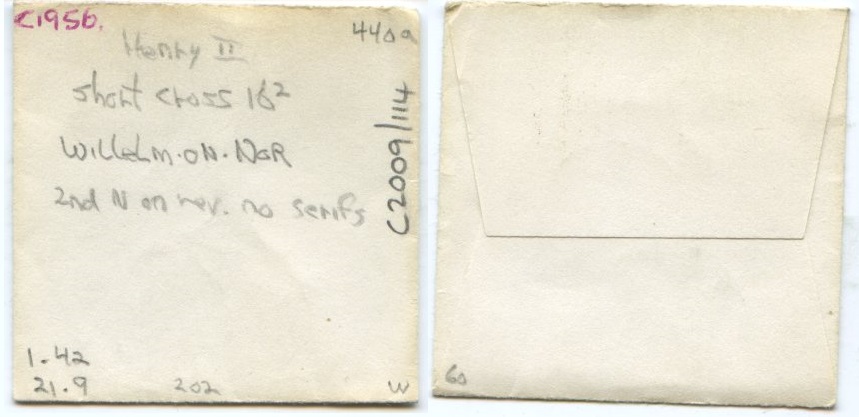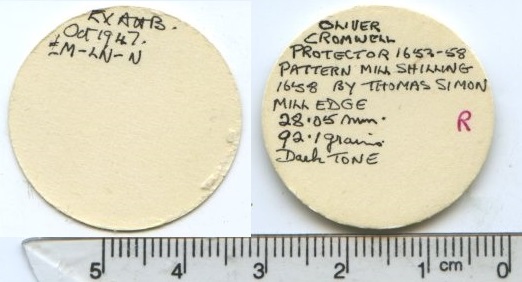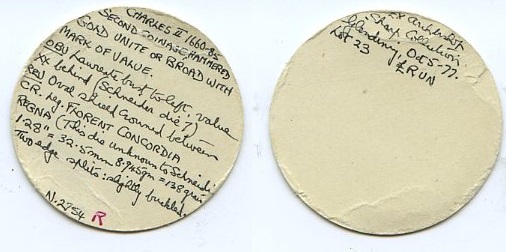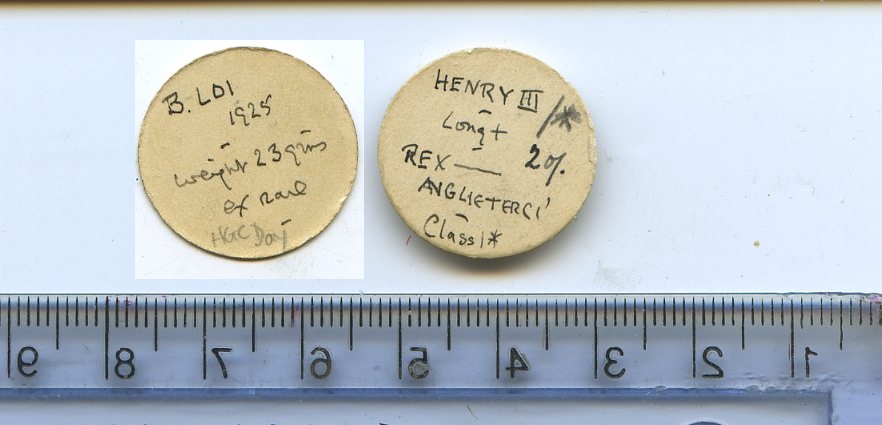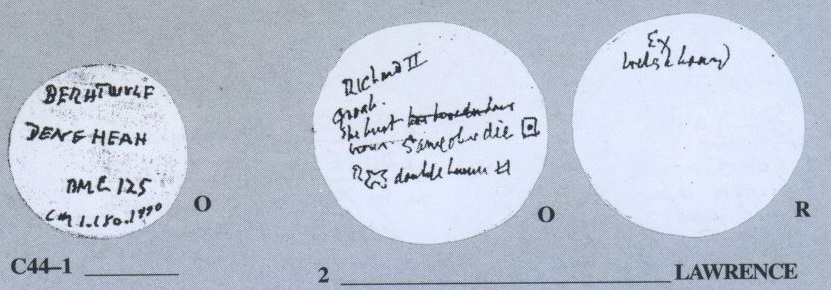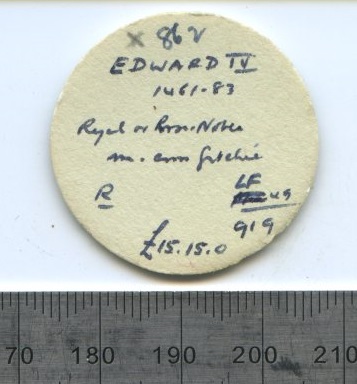-
Posts
12,771 -
Joined
-
Last visited
-
Days Won
343
Content Type
Profiles
Forums
Events
Downloads
Store
Gallery
Articles
Everything posted by Rob
-

Cope and Raynor Errors?
Rob replied to DaveG38's topic in British Coin Related Discussions & Enquiries
It has to be a mistake. I don't know what the printing technique used at that time, but if it was a case of assembling words in blocks and dropping them in, then it would be normal to pull out farthings and drop halfpennies into the vacant spots. There was only one print run. -
The last digit, or the last two digits were entered by hand. As a result the date can appear wide or narrow. That was made from a 186 master, but some are only 18.
-
Nothing wrong that I can see, though no reverse image. Why would you think it wrong?
-
Difficult to say. A picture rarely conveys the same impression as something in hand. But there are clear lines on the obverse, hence the assessment.
-
Looking at the obverse it has been wiped
-
Don't shout too loud chaps. I've had it pointed out that I could have bought more than the odd kitchen in the past few years.
-
I'm not sure Mrs N would have appreciated being thought of as something servicing the whole of the north west of the UK.
-
Not as far as I am aware.
-
Its an old turd as far as you have been told. You don't know, and nor do I. Have to question everything until you are happy in your own mind of the arguments for and against. Now, what are the dimples running along the middle line of said exhibit?
-
I know you claim it is coprolite and I know of this, but what are the dimples resembling a fish's lateral line? Don't tell me they are skewer marks from a prehistoric hot dog fresh off the BBQ as I won't believe you. I wouldn't expect to see regular features on any turd, new or old.
-

Very Old 1912 Penny
Rob replied to singlemom29's topic in British Coin Related Discussions & Enquiries
1920 to1946 silver is 500 silver & silver coins up to 1919 are 925 silver. Silver coins from 1947 onwards aren't. Scrap bronze or cupro-nickel is effectively worth scrap copper price. If they are in better condition they might be worth more. You'll have to post some images to give us an idea. -

Large Bag of 1967 Half Pennies
Rob replied to JACGW's topic in British Coin Related Discussions & Enquiries
In a way it would be good if the mint would take them back as it is surely an alloy mix they use to this day, but if you tried to cash them in at the BoE then you would only get face instead of their intrinsic value. -

Very Old 1912 Penny
Rob replied to singlemom29's topic in British Coin Related Discussions & Enquiries
Try soap and water with a soft brush if it is dirt. Don't scrub it or use a hard abrasive of any description and pat dry with a soft towel. -

Large Bag of 1967 Half Pennies
Rob replied to JACGW's topic in British Coin Related Discussions & Enquiries
Melt value. There are countless bags of 1967 coins of all denominations lying around with probably millions of coins still sitting there. -
SAZAMA, J Jim Sazama's collection of medieval coins was sold through DNW over many sales from 2011 onwards. Some coins had 24mm tickets with sparse detail, but all coins were in envelopes with description, weight in grams and grains, and what was presumably the cost on the back. All written in pencil.
-
BRADY, F Frank Brady's collection of groats was sold at Spink in October 2011. There were no Brady tickets, only those of previous owners or dealers, the coins being held in 2x2 paper envelopes with the North reference written on.
-
PARSONS, O F Collection sold by Baldwin in May 1997 (sale 12). White tickets 29mm dia in the case of the first. Not sure about the diameter of the second. Description on one side, provenance and cost code on the other.
-
I'm not convinced that the buyer will be unhappy when it arrives. The pictures are clear enough to show the cast nature of the surfaces and the weight is stipulated to be about 6g. To us it is obvious, but it's clear from this that there are a lot of people living in blissful ignorance. You see it all the time, as regularly featured on this thread. Buyers don't know what they are bidding on, and I'm sure that many sellers of the same don't know better either. In the meantime, eBay rake in their fees and abrogate any responsibilities they should have. If you want to acquire a moral compass, I cannot recommend eBay's own brand, even with free postage from a company with perfect feedback.
-
Not too fussed about the contents, but I'd like some of those bags. Anything dating from 1279 ish which hasn't decomposed in the interim has to be good.
-
Weighs approximately 6g - and still they bid!! Perhaps I shouldn't shout too loudly given my mm.eye 3a3 halfcrown weighs 5.91g.
-
I know where you get your news from. nah, nah, nah, nah, nah. A splendid organ.
-
There is one obverse and one reverse uniface.
-
DAY, H G C One sale in 1902, and a second collection was purchased by Baldwin c1935. This ticket came from the latter portion.
-
LAWRENCE, L A L A Lawrence was a well known figure in numismatics for over fifty years covering the first half of the 20th century. The tickets shown in the BNJ show wildly different styles of writing, so a letter from Lawrence is also included to show a wider range of characters of a style he may have used.
-
SEABY, H A A ticket in the handwriting of the founder of the company, Bert Seaby. Top line is the Bulletin reference, selling price is at the bottom, and acquisition details shown as the fraction lower right. The reverse is blank.The ticket has a hint of a greenish hue, but tickets of many colours are known over time.Ticket diameter 32-33mm, other sizes are known.


